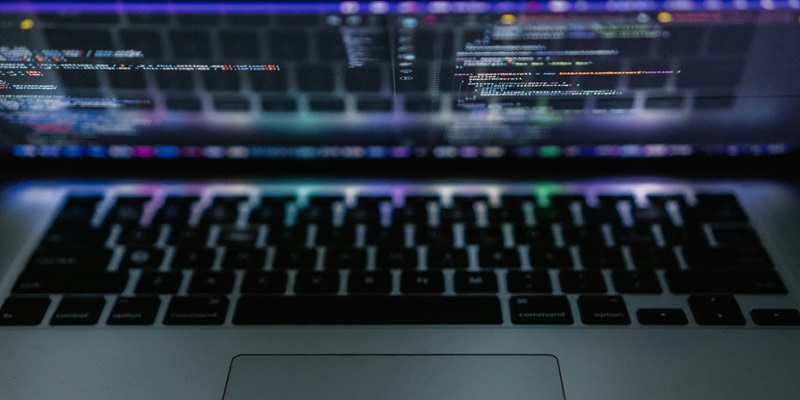The integration of artificial intelligence into software development, exemplified by tools like GitHub’s Copilot, is profoundly changing the coding ecosystem. These advancements hold the promise of boosting developers’ productivity through enhanced speed and efficiency in coding processes. Yet, this rapid evolution has ignited an important discussion on the balance between the pace of generating code and the critical need for quality maintenance.
As developers adapt to this new landscape where AI plays a central role, it’s pivotal to navigate how to keep the integrity of software quality intact. With the pace of innovation steadily increasing, we are at a crossroads where the challenge is to merge the swiftness of AI-assisted coding with a commitment to producing reliable and high-quality software. The pressing issue is to devise methods and strategies that uphold the steadfast quality standards that are quintessential to the software industry, even as artificial intelligence is set to accelerate development workflows.
Assessing the Impact of AI on Code Metrics
Recent insights drawn from analyses like those conducted by GitClear have cast a spotlight on how AI may alter the conventional dynamics of coding practices. Their findings—hinging on the review of vast swathes of code—imply that AI-generated code could instigate increased code churn and a notable reduction in code reuse. This potential shift suggests that the integration of artificial intelligence may lead to an inadvertent compromise in the integrity and robustness of a codebase.
Moreover, there’s a growing concern about the sheer volume of code that artificial intelligence is capable of producing. The unprecedented pace at which these AI tools contribute could inadvertently spawn an excess of code, something that can lead to bloated software repositories and a reduction in the painstaking craftsmanship that characterizes high-quality software. With this expansion comes the daunting task for security teams who find themselves sifting through an augmented thicket of vulnerabilities, demanding more scans, and addressing more potential points of failure.
Quality Versus Quantity in AI-Assisted Development
For burgeoning developers, AI tools like Copilot are an undeniable boon, offering a helping hand to navigate the complexities of coding. The pace of development is notably accelerated, yet it’s crucial to pause and ask whether this rapid generation of code is upholding or undercutting the bedrock of quality. Speed is a valued commodity in modern software development, but not at the expense of the dependability and excellence users expect.
The viewpoint at GitHub reflects the broader industry’s concerns of distinguishing AI-written code from that crafted by human hands. It emphasizes the importance of preserving the quality of contributions, regardless of their origin. Developers are thus encouraged to treat AI-generated suggestions with a critical eye, subjecting them to the same rigorous benchmark traditionally reserved for peer code review, ensuring the final product is both optimized and free from errors.
Strategies for Maintaining Code Quality with AI
In order to balance the scales between innovation and excellence, developers are called upon to exercise discretion when working with AI coding tools. Rather than accepting every AI-proffered suggestion, it’s imperative to engage critically with the code, keeping a keen eye out for potential pitfalls and ensuring AI-assisted output meshes seamlessly with human-authored work.
It is equally critical to continue venerating the traditional virtues of code review and the relentless pursuit of non-redundant, succinct code. These time-honored practices offer a buffer against the risk of diminishing quality amid the flood of AI-assisted code, safeguarding the lean and high-performance nature of software projects. By incorporating AI-generated contributions with discernment and careful consideration, developers can strive to maintain the standards of quality that define professional software development.
Establishing Metrics for AI’s Effect on Code Quality
In the wake of AI’s growing role in software development, there is an acute need for metrics that effectively measure the impact on code quality. The quest for such metrics is not just academic but a practical imperative for software organizations intent on harnessing AI’s power without sacrificing the sanctity of their codebases.
Reaching a consensus on what constitutes quality in code is paramount. Each organization must grapple with its objectives, values, and benchmarks to craft a clear definition of quality that caters to their unique aspirations. Having these definitions in place is foundational to identifying the proper metrics that will reveal the nuances of AI-powered coding’s influence on quality, enabling organizations to navigate this new territory with confidence and clarity.
Embracing the Benefits of AI with Caution
The advent of AI tools has undeniably raised the productivity ceiling, especially for those early in their software development careers. These tools democratize capabilities, allowing a wider range of developers to make significant contributions to their organizations. However, it is critical for practitioners to scrutinize AI-generated code with a thoroughness that ensures its compatibility with the established codebase and its effectiveness in solving the task at hand.
Amid the excitement surrounding the adoption of AI technologies, a healthy dose of skepticism is essential. By acknowledging the potentials and the pitfalls, developers can appreciate the benefits while remaining vigilant against any deterioration in the quality of their work.
The Necessity of Vigilance in AI-Augmented Development
As the software industry evolves, a balance is sought between leveraging AI’s advantages and upholding code quality. The industry champions an AI-integrated future without compromising the discipline at the heart of software development. Adapting to an AI-enhanced workflow means ensuring that progress in efficiency does not undermine quality standards. This entails a dedication to merging the latest AI advances with steadfast programming fundamentals. Doing so is key to fostering the growth of software development, marrying innovation with the reliability that quality code brings. This fusion of AI and coding excellence is essential for the industry’s continuous evolution, maintaining a focus on creating robust, reliable software even as AI becomes more embedded in the development process.

